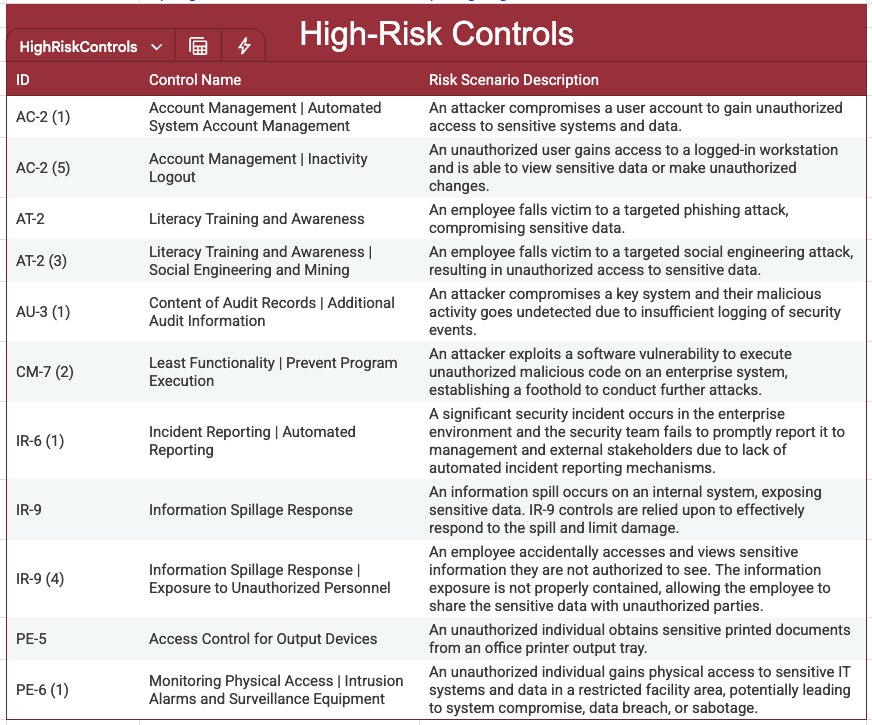
Part 3: Toward Continuous Compliance: Open Telemetry, Control Coverage, and the Role of the 3PAO
Part 3: Toward Continuous Compliance: Open Telemetry, Control Coverage, and the Role of the 3PAO
By Casey Jones, Chief Architect of Knox Systems
In Part 1, we proposed the concept of a Security Ledger: a cryptographically verifiable system of record for compliance that updates continuously based on real-time evidence. In Part 2, we detailed how risk-adjusted confidence scores can be calculated using Bayes’ Theorem and recorded immutably in LedgerDB.
In this third and final part of the series, we focus on the next frontier: standardizing telemetry coverage across controls, open-sourcing the control-to-evidence map, and redefining the role of the 3PAO to ensure integrity in a continuous compliance world.
Building the Open Compliance Telemetry Layer
In order for the Security Ledger to be trustworthy, it must be fed with comprehensive, observable evidence across the full FedRAMP boundary. That means creating a control-to-telemetry map that:
- Defines what evidence types are relevant for each FedRAMP control
- Maps those to Prometheus-compatible metrics
- Defines evidence freshness, decay windows, and severity
- Supports automated generation of control coverage reports
At Knox, we’re working to open-source this telemetry model so that:
- Every stakeholder (CSPs, 3PAOs, agencies) understands the required observability footprint
- No one is guessing what counts as evidence
- The community can contribute new detectors and mappings
Just like OWASP standardized threat awareness, we need a COTM — Common Observability for Trust Model.
Coverage Is the Control: Incomplete Telemetry ≠ Compliance
In the current FedRAMP model, it's possible to "pass" controls without actually observing the whole system. But in a ledger-based model, telemetry gaps are violations.
Examples of common pitfalls:
- Only scanning certain subnets or environments (e.g., “we forgot our staging VPN”)
- Disabling or misconfiguring logging for noisy subsystems
- Letting vulnerability scan coverage drop below 100% of the boundary
- Using static evidence from prior scans without freshness guarantees
- Allowing Prometheus exporters to fail silently without alerting
In a real-time, risk-scored model, all of these create confidence decay—and should result in lowered scores or even automated POA&M creation.
The New Role of the 3PAO: Continuous Verifier of Scope, Integrity, and Fair Play
In a world where compliance is driven by real-time evidence, the Third Party Assessment Organization (3PAO) becomes more critical—not less.
But their role shifts from "point-in-time validator" to continuous integrity checker.
Here’s what the 3PAO’s job looks like in a Knox-style system:
1. Boundary Enforcement
- Validate that all components within the FedRAMP boundary are included in telemetry coverage
- Detect "convenient omissions" (e.g., shadow servers, unmonitored edge cases)
2. Signal Integrity
- Confirm that metrics flowing into the Security Ledger are accurate, unmodified, and traceable
- Review sampling intervals, evidence freshness, and exporter health
- Perform forensic verification of selected evidence streams
3. Anti-Fraud Auditing
- Detect signs of foul play or negligence, such as:
- Turning off scanning before high-risk deploys
- Creating “burner” environments that avoid monitoring
- Suppressing alert signals or log forwarders
- Replaying old data to simulate real-time telemetry
4. Ledger Auditing
- Verify the cryptographic chain of trust in the ledger system (e.g., via Amazon Aurora PostresSQL or blockchain)
- Ensure control scores are only adjusted by valid evidence with assigned LLRs
- Validate that manual overrides are documented and signed
In this model, the 3PAO becomes the trust anchor of the continuous compliance pipeline.
They’re not just checking boxes—they’re inspecting the wiring.
Transparency Through Community
All of this only works if the model is open:
- The LLRs for each control must be public
- The control-to-metrics map must be versioned and community-governed
- The Security Ledger’s core schema must be inspectable and verifiable
Just as large language models opened their weights to gain credibility, compliance models must open their logic. Closed-source compliance logic is a liability.
The Future of FedRAMP Is Verifiable, Transparent, and Alive
We’re not just building for ATOs—we’re building for continuous trust.
FedRAMP’s future lies in:
- Real-time metrics
- Probabilistic control scoring
- Immutable audit trails
- Open-source control logic
- 3PAOs as continuous validators, not just periodic checkers
At Knox, we’re committed to that shift—because trust shouldn’t expire every 12 months.




